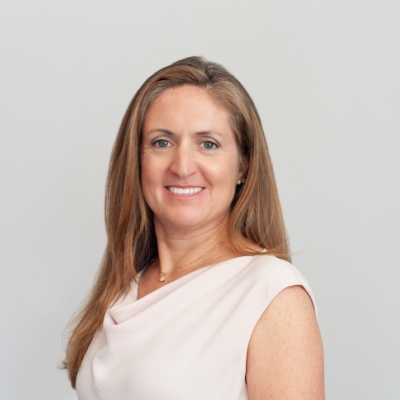Finland—the tiny land of reindeer, snow, and saunas—burst onto the American education scene in the past decade as the unlikely poster child for the anti-reform movement. Hardly a week goes by that someone doesn’t implore reformers to learn from this nation with low poverty, high achievement, and virtually no standardized tests—and abandon our support for standards- and accountability-driven reform. After all, Finland’s education system today is characterized by few top-down regulations, broad teacher autonomy, and virtually no centralized accountability. Given its success on international assessments, it must follow that U.S. schools would do better if we copied the Finland model.
 Finland: Land of reindeer, snow, and a world-famous education system. Photo from RukaKuusamo.com |
Right?
Not exactly.
First, there has been some recent evidence that Finland’s successes may not be as miraculous as once thought (it slipped on the recent TIMSS math test). But more than that, to understand what is going on in Finland, a good place to start is with a November 2010 McKinsey study entitled, “How the world’s most improved school systems keep getting better.”
As part of their research, the McKinsey team studied twenty school systems around the world that had seen “significant, sustained, and widespread gains in student outcomes as measured by international and national assessments.” Among the most interesting findings of the report was the difference between the reforms needed to move a system from fair to good performance and the policies needed to support good systems working to become great. More specifically, systems moving from poor to fair rely far more heavily on policies that “tightly control teaching and learning processes from the center because minimizing variation across classrooms and schools is the core driver of performance improvement at this level.” Systems seeking to progress from good to great, by contrast, “provide only loose guidelines on teaching and learning processes because peer-led creativity and innovation inside schools becomes the core driver for raising performance at this level.”
What does that have to do with education reform in America? A lot, actually.
As the McKinsey study indicated, school systems that aren’t working very well don’t suddenly head for greatness by merely “trusting teachers” and loosening control and regulations. And Finland is no different. In fact, the autonomy and decentralization we see in Finland today came after more than two decades of tightly controlled, centrally driven education reform that systematically adjusted curriculum, pedagogy, teacher preparation, and accountability. It was only after this top-down systemic reform moved Finland from poor to good that its education leaders shifted to a more flexible approach. And so, as we look to emulate Finland, we should ask ourselves whether our state and district school systems more closely resemble the Finland of yesterday or today.
A brief history of education reform in Finland
In the 1960s, Finland’s education system looked far different. Achievement was uneven and not all students had equal access to quality schooling. In 1968, as part of a nationwide focus on better preparing students to compete in the knowledge economy, the Finnish Parliament enacted legislation to create a new basic education system built around development of a common “comprehensive” school for grades 1 through 9—a system that spread to every municipality in the land by 1977. Three things characterized the new Finnish standard:
1. The development and adoption of a mandatory national curriculum that ensured all students were held to the same rigorous standards;
2. Dramatic changes in teacher preparation and certification requirements; and
3. A central state inspectorate that evaluated school-level teaching and learning.
National Curriculum
In order to ensure that every student was taught the same rigorous content, the central government (working with teachers) developed a national curriculum that was the cornerstone of the comprehensive school system—and that was for many years mandatory for all schools in that system. Cited in a 2010 OECD report, one high-level education administrator explained how challenging this move from a loosely governed system of independent schools to a system of government-run schools was.
…There were lots of municipalities that were not eager to reform their system, which is why it was important to have a legal mandate. This was a very big reform, very big and complicated for teachers accustomed to the old system. They were accustomed to teaching school with selected children and were simply not ready for a school system in which very clever children and not so clever children were in the same classes. It took several years, in some schools until the older teachers retired, for these reforms to be accepted.
That’s hardly the story of a reform system built on teacher autonomy and professionalism. Instead, it sounds a lot like the debates we are having right now over Common Core and state accountability systems.
Teacher Certification and Preparation
A critical part of Finnish school reform was a nationwide effort to improve teacher quality. Policymakers understood its importance in driving student achievement, and they invested heavily in it. In the early years, that investment included professional development aimed at existing teachers, but Finland also took the long view and expended even more effort on improving its talent pipeline. For instance, they made it far harder to get a teaching job: possession of a master’s degree is now a precondition of classroom employment.
But perhaps even more importantly, teacher education in Finland is strongly content driven. Even primary teachers majoring in education need to minor in at least two content areas—and their content-specific education is delivered not by the teacher-preparation program but by the relevant university content department. (A math minor, for instance, takes her math courses in the math department.)
Second, courses devoted to pedagogy are grounded in content as much as in theory. As the OECD report explains,
Traditional teacher preparation programmes too often treat good pedagogy as generic, assuming that good questioning skills, for example, are equally applicable to all subjects. Because teacher education in Finland is a shared responsibility between the teacher education faculty and the academic subject faculty, there is substantial attention to subject-specific pedagogy for prospective primary as well as upper-grade teachers.
This clear focus on ensuring that teachers are content experts is critical.
Emulating Finland
When one looks quickly at today’s Finnish education system without understanding its history, one sees a different story. That’s because the mid-1990s brought a considerable loosening of regulation by government. In particular, the national curriculum was pared down, becoming more of a guide than a script, and the inspectorate was eliminated, thus giving schools far more autonomy. The teacher certification and preparation reforms, however, remain strong as ever.
These changes represent an evolution. Yes, Finnish educators now enjoy broad autonomy over curriculum and instruction, and schools are largely self-governed. But this happened only after decades of reform aimed at raising standards for both students and teachers and ensuring that teachers had the capacity to thrive under a more decentralized system. Finland followed the McKinsey playbook, whether by design or not. When it had many struggling schools and teachers with weaker training, its reforms were characterized by tighter control with an emphasis on standards and outcomes. Once the teacher workforce—over more than two decades—was better prepared to teach the content articulated by the curriculum, and once student learning had improved, the state loosened its control.
More than that, though, Finnish leaders had the patience to see the reforms through. The national curriculum took five years to develop, and the teacher workforce took even longer to prepare. But the state didn’t waver from its resolve to get it right.
Ultimately, Finland’s success is built atop a series of hard choices, rigorously implemented. The closer you look, however, the more you realize that Finland’s approach works not because it is a universal template of success but, instead, because it is a Finnish solution to which they are committed. Americans shouldn’t be looking to slavishly copy these exact hard choices; rather, we should be looking to the spirit with which they were made and the Finns' resolve to see them through.
A version of this article appeared in Fordham’s Common Core Watch blog.
